This Aluminum Cooler Stays Cold Longer Than a Yeti
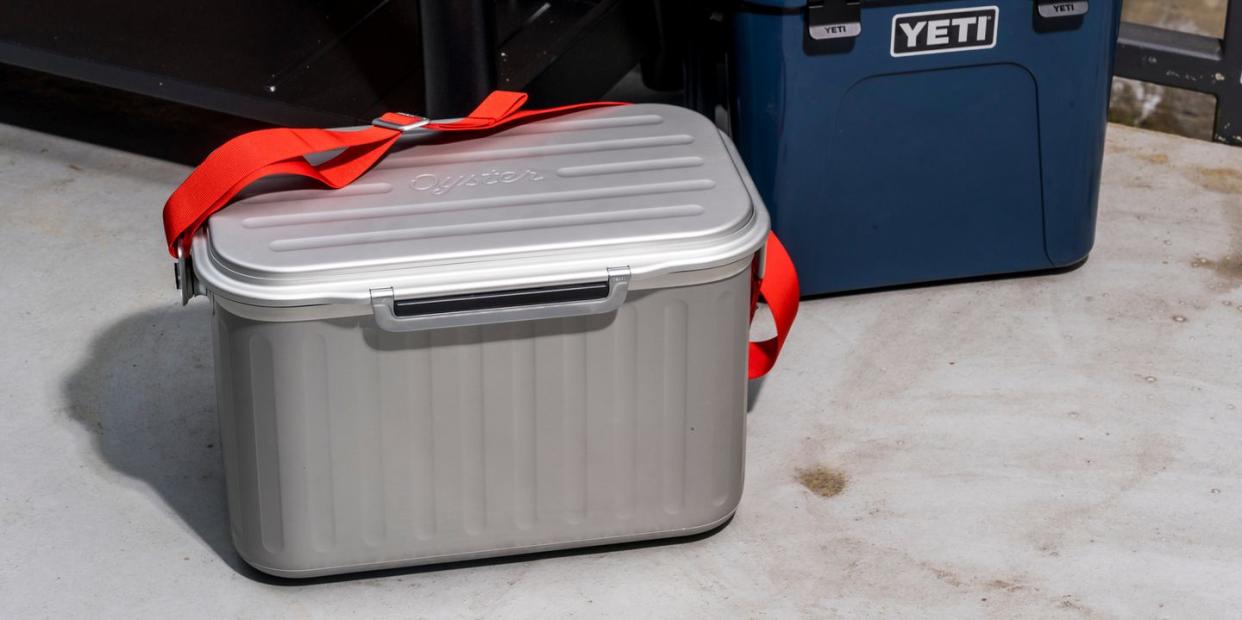
"Hearst Magazines and Yahoo may earn commission or revenue on some items through these links."
Yeti coolers are basically the gold standard of summer parties. The hulking plastic tubs (and Yeti-like versions from Rtic, Polar, Pelican, Orca, and more) can keep ice and beer cold for hours or even days. But, to do so, they require ice—and lots of it. A new cooler company has us wondering, what if you don’t need to fill a cooler ⅔ full with ice cubes just to keep your drinks cold?
That’s the promise of the Oyster Tempo, a relatively small (by comparison) aluminum cooler made in Norway. We’ve tested the cooler and shared our results below, but first let’s look at its background.
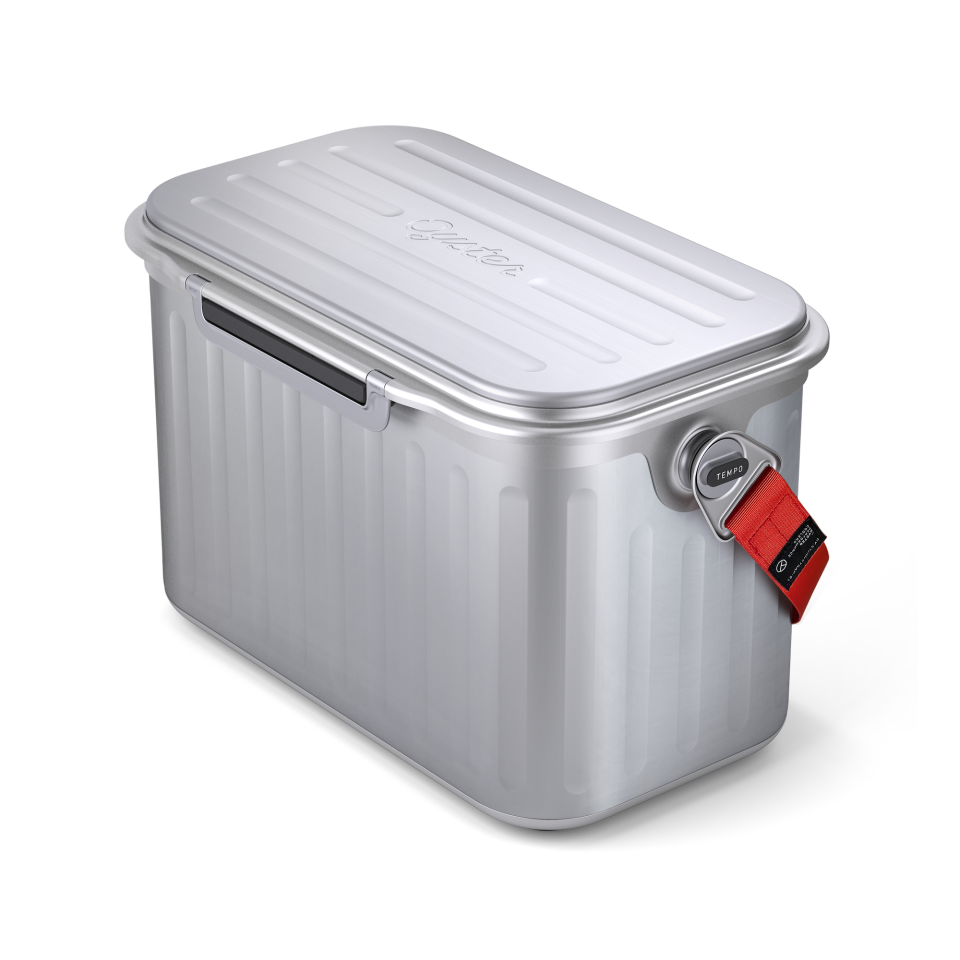
Tempo Cooler
$500.00
oystercooler.com
OysterOyster Tempo Cooler Overview
The Oyster Tempo was inspired by the classic Thermos vacuum flask, created in 1904, said Oyster CEO Ole Christian Sandberg, on a phone call with Popular Mechanics ahead of the cooler’s launch. He explained that the Thermos’ round shape has a structural advantage—it provides the rigidity needed so the sides won’t collapse under vacuum pressure. But, a rectangular shape proved more problematic, because two flat surfaces tend to implode when subjected to a vacuum.
Turning to a sandwich of aluminum and a natural material called “fumed silica” for the insulation in the tub and the lid, Oyster found it could resist that negative pressure and maintain the cooler’s shape. The result, the company claims, is a vessel that has three times the storage space of a conventional cooler while being roughly half the overall size.
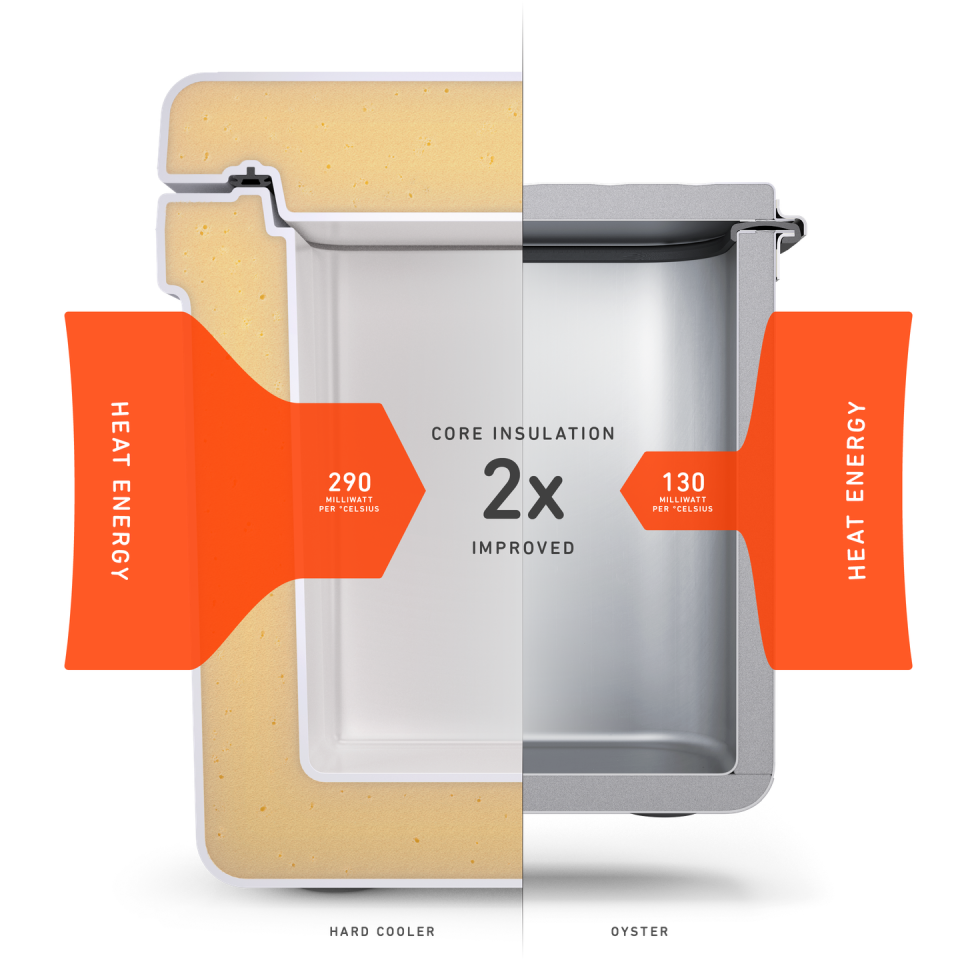
How the Tempo Cooler Performs
If the size and capacity aren’t impressive, Ole says the cooler can stay three times colder than the competition, too. This, it’s believed, is because the aluminum conducts thermal energy 380 times faster than plastic, so it distributes the cold more efficiently within the cooler.
In its own internal testing, Oyster benchmarked against a 24-liter CVS cooler (which uses air insulation) and two Yeti coolers—a soft-sided Hopper 18 and the hard-sided Tundra 45. After 10 hours, they found the Oyster was three times colder than the Tundra, its closest competitor.
To explain the differences in performance, Ole said that because of the Tundra’s wall thickness and mass, “basically, the Tundra is sucking out the cold energy to cool itself down before it reaches an equilibrium—and then starts to insulate the contents of the cooler.” To be fair, that’s addressed in the number 1 tip from Yeti to help keep your cooler colder, longer: “Preload your cooler a few hours prior to use with a sacrificial bag of ice to cool it down.”
It’s also worth noting here that Oyster did not share any data comparing its cooler against the Yeti V Series, a stainless steel cooler the company claims uses vacuum insulation. The V is a massive ice chest, though, weighing 34.4 lbs and can hold 96 cans of beer. It’s basically in a different category of refrigeration.
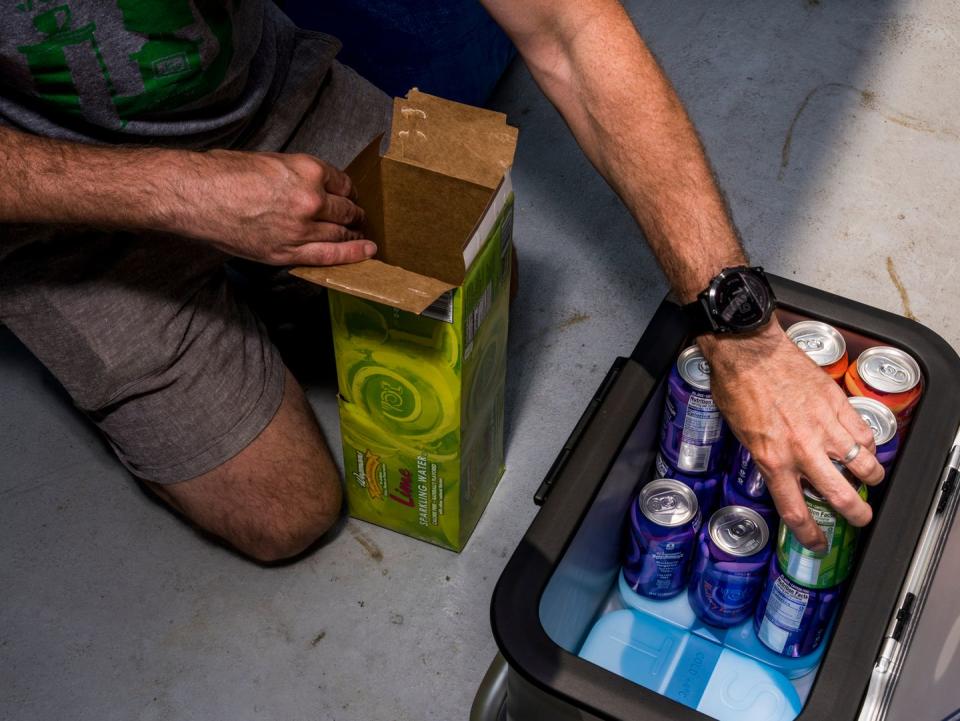
Our Test of the Oyster Tempo Cooler
I wanted to test the lofty claims of the Oyster Tempo, but not in a typical cooler test with lots of ice. Does the Tempo really stay cold without lots of ice, as Oyster claims? I compared it to a Yeti Roadie 24.
Oyster Tempo | Yeti Roadie 24 | |
|---|---|---|
On paper, these two coolers look pretty evenly matched, with similar capacity. The Oyster is a little wider, the Yeti a little taller. But, once we chilled 12oz cans of seltzer, that’s where the similarities ended.
Both coolers started at room temperature (65.6 degrees Fahrenheit) in my basement. The cans of Wegmans seltzer (don’t hate me) were chilled in the refrigerator to 34.8 degrees Fahrenheit.
For this test, I used the two ice packs that ship with the Tempo. Each ice pack is 8 inches x 8 inches and ⅞-inch thick. Ole said Oyster engineered these to not get quite as cold as typical ice packs. “When we started using [regular ice packs], it actually froze the contents of the cooler quite quickly,” he said. “On the beach, you end up with frozen drinks instead of cold drinks. So we had to develop a specific mixture in the ice pack that wouldn’t keep it as cold.”
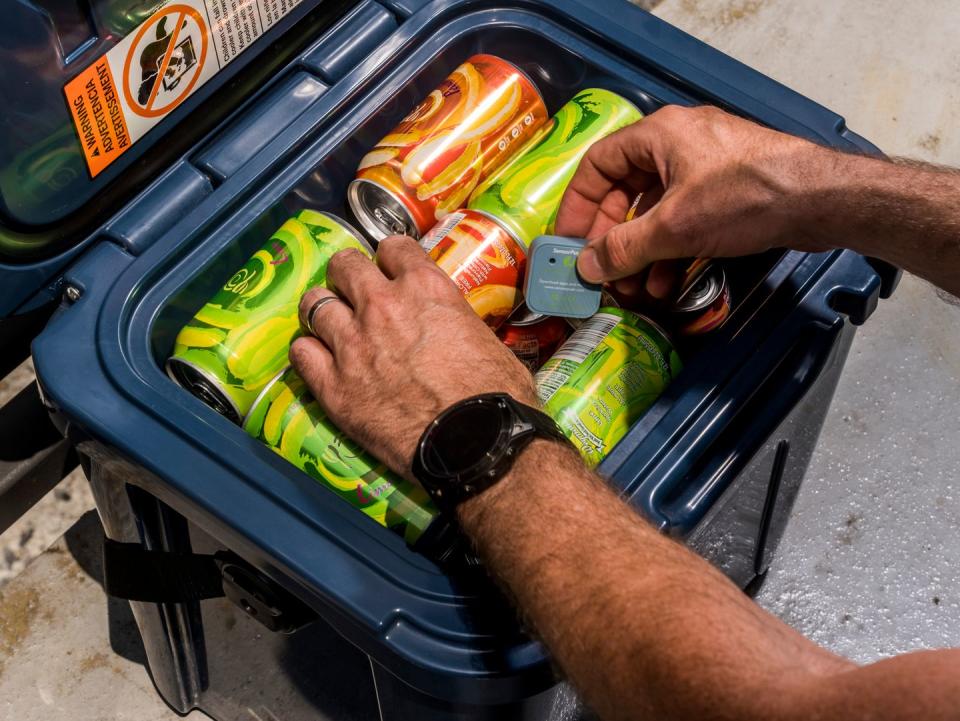
And to monitor what was happening inside the cooler, I placed a Sensor Push HT1 wireless thermometer and hygrometer inside the coolers and connected them to my iPhone. This not only let me see the temperature without opening the lid but it recorded temperature changes over time.
I loaded both coolers nearly to capacity with chilled seltzer—35 cans in the Oyster to leave room for the thermometer, and 30 cans in the Yeti (that’s all I could fit; I’m not good at “Tetris”).
Once loaded, both coolers were moved to my kitchen, which was 75 degrees Fahrenheit.

Astonishingly, the Oyster’s temp actually dropped! Checking in after the work day, seven hours later, the Oyster dropped to 34.2 degrees and the following morning (18 hours) the temperature had dropped even further, to 33.2 degrees. After 24 hours, I took the ice packs out—the temperature was still below 34 degrees—and I started drinking the seltzers.
Air space can be the death of a cooler, because the ice (and ice packs) will be used to cool the air. To prolong your chill, you could use a towel to fill the dead space. But, I’ve never done that with any cooler, so I let the space grow as I continued drinking.
When I woke up on the morning of the third day, the cooler had just cracked the 40-degree mark. At 46 hours, I called off the Oyster test, as temps rose to 43.1 degrees. That’s cold enough for seltzer, for what it’s worth, but anything above 40 is in the danger zone for food safety.
The Yeti, by comparison, had the same starting conditions. But, unlike the Oyster, which got colder, the Yeti’s internal temperature rose immediately. That’s not surprising, because I had not pre-chilled the cooler. Just 7 hours in, without ever opening the cooler, the Yeti was already up to 47.3 degrees—that’s higher than the Oyster was after nearly 7 times the duration.
I quit the Yeti test at 24 hours when the internal temperature rose to 53.8 degrees. It’s clear the Yeti needs more than just two ice packs to keep things frosty.
To sum it up: The Oyster was 13.1 degrees colder than the Yeti after 7 hours and a whopping 17.9 degrees colder after 24 hours.
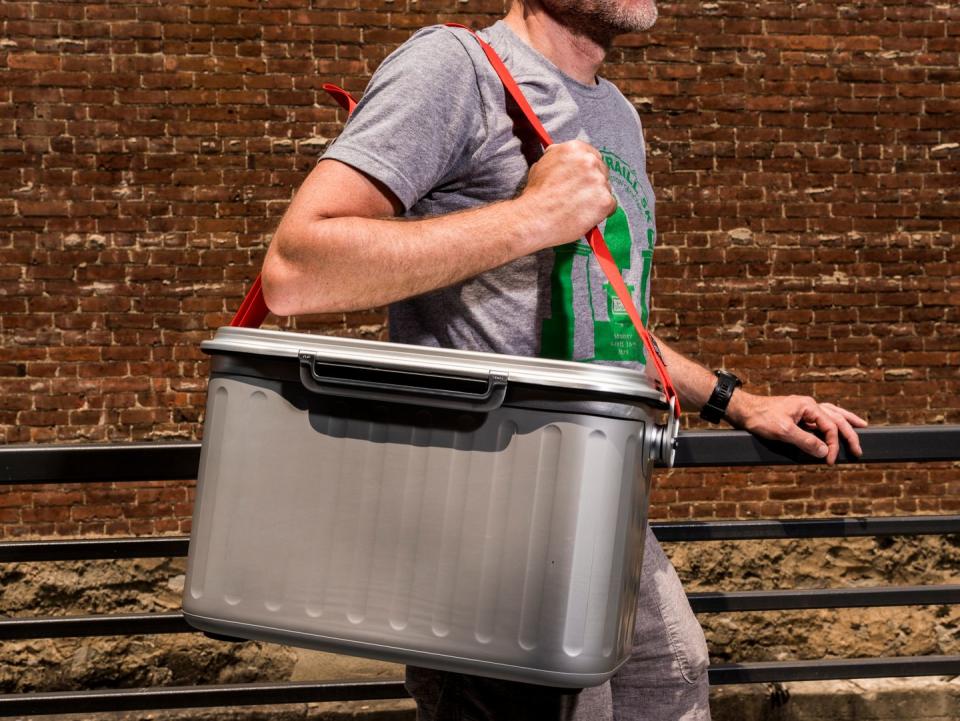
Other Reasons to Love the Oyster Tempo Cooler
The aluminum construction is unique, but the Oyster Tempo has a couple other neat features that set it apart from other coolers.
First, the hinged lid is incredibly practical. The cooler can be opened from either side so, say you’re on a boat, nobody has to reach over the lid or walk around the cooler to find a drink. But, even more useful is that the lid can be removed entirely, making it a snap to wash the whole thing without the lid flopping around.
Also, the Oyster Tempo’s metal handle can be easily swapped out for a nylon shoulder strap. I find the hinges dig into my sides a little, but it’s not much bother and is far easier to carry when the cooler is fully loaded.
Who Should Buy an Oyster Tempo Cooler?
The test was proof enough for me that the aluminum construction outperformed the plastic tub we’ve come to know as being the best in the business. But, it’s still just in preorder phase and it costs twice as much. You can buy a lot of bags of ice for the extra $250 you’d save by going plastic. Plus, the Oyster has an undeniable aesthetic appeal—anybody else getting Airstream camper vibes?
If your cooler usage is often unplanned, and you’re not the type to pre-chill, the Oyster makes sense. You can snag it on the way out the door to the grocery store and chuck in all your frozen stuff without any ice. Rest assured, your ice cream is still going to be rock solid by the time you get back home.
Another reason you might like it: you don’t have to fish around in icy cold water for a drink. Even at the peak of summer, I hate having frozen hands just to get a chilled beer. With the Oyster Tempo, there’s no melted ice to contend with.
Will it knock Yeti off the summer picnic pedestal? Not any time soon, given you can find a pyramid of coolers at every Dick’s Sporting Goods. The Oyster, for now, is only available by internet order from the company.
You Might Also Like

